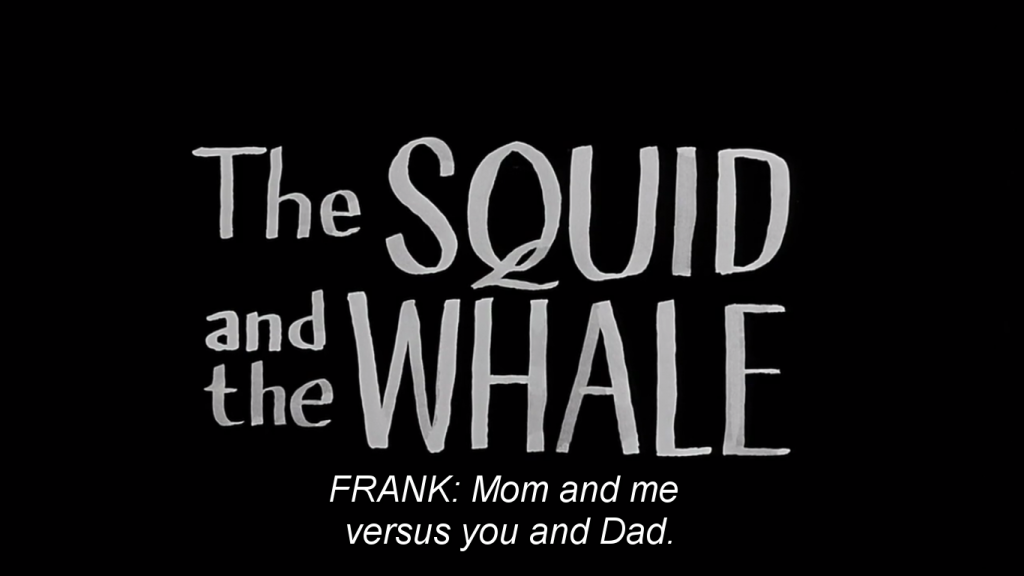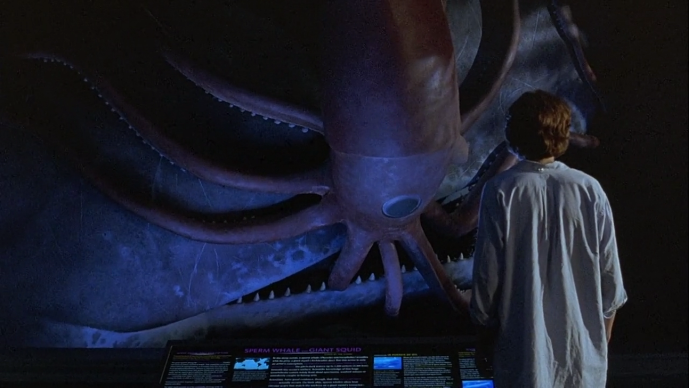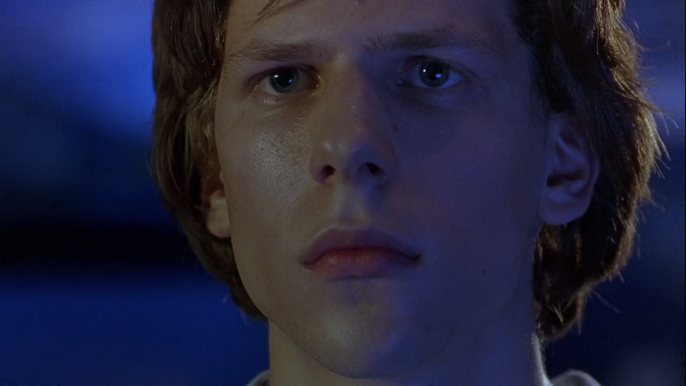
The Squid and the Whale is a film all about conflict. It tracks the divorce of a couple of New York intellectuals and the effect it has on their two sons. The film opens with a line from the younger boy, Frank; ‘mom and me versus you and dad,’ cleverly summing up the central conflict of the film as the Frank sides with his mother and the older Walt with his father. However, the title itself also refers to this conflict. It is a reference to the huge diorama on display at the Museum of Natural History that depicts these two giants of the sea in eternal conflict, neither fully winning out over the other. This titular reference hangs over the film, as each parent struggles for supremacy, both in their relationship and in the literary world.

Figure 1: The title appears at the same time as the central thesis of the film.
One of the film’s most striking images comes when Walt leaves his father at the hospital, running to the Museum to visit the underwater exhibit. Bathed in blue light, the camera follows Walt’s progress through the Museum until he is face to face with the squid and the whale themselves. This scene is given narrative importance by an earlier one in which Walt talks to a therapist after plagiarising a song for the school talent show. In this scene, Walt fondly remembers trips to the museum with his mother. He tells the therapist ‘I was always afraid of the squid and the whale fighting. I could only look at it with my hands in front of my face.’ This line seems to sum up Walt’s role throughout the film. His parents’ conflict is uncomfortable to him and so he shields himself from it, distancing himself from his mother and ignoring her perspective. However, this final scene serves to tell us that Walt can now look on the conflict as a whole, and this ability to see the whole picture results in a greater sense of clarity.


Figures 2 and 3: Walt looks on at the symbol of conflict.
The diorama of the two creatures in permanent conflict can also be read as a symbol of the two parents’ struggles in the literary world. Frank is the once great whale, who is bullish, aggressive and domineering with his words. However, his supremacy is challenged by the arrival of the squid. Squids use ink as a defensive tool, and there are clear parallels between this natural image and Joan’s ascension in the literary world. By using this ink, and showing her abilities as a writer, Joan challenges Frank’s ideas of himself. Frank’s own success becomes his white whale; he is obsessed with it, and becomes increasingly erratic and tense as he chases this goal. However, he never quite manages it, and this diorama stands as a permanent reminder of his failures, never exerting his supremacy over the squid. This use of animal imagery is central to the film, providing an interesting symbolic representation of the various ways Joan and Frank struggle to surpass each other, both in the context of the marriage and the literary world.